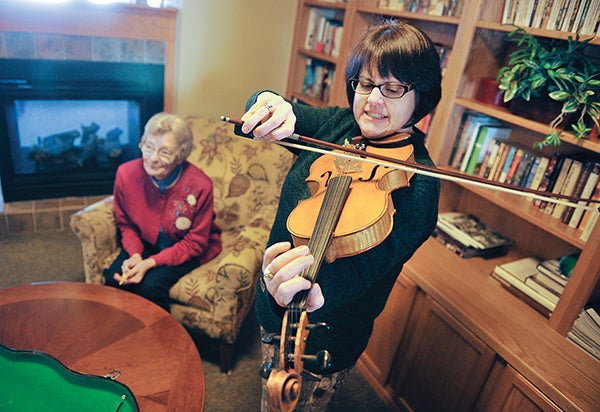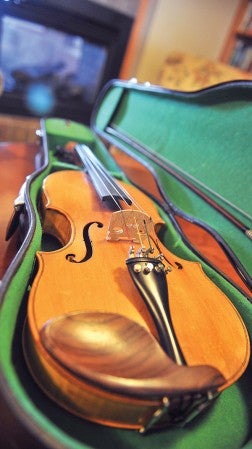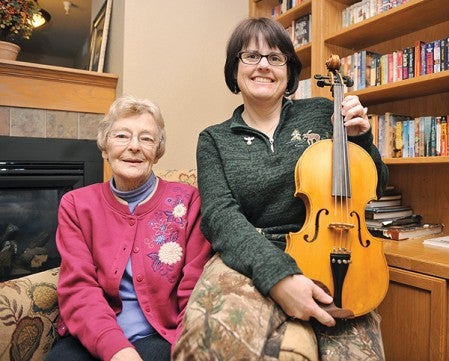Music from the past

Mary Hansen tests a viola she played while she was going to school. Behind her, Judy Brown listens. Brown’s father used to make violas and violins and made the one Hansen played.
Viola sparks memories from those involved in its past
Hidden in storage, inside of a case, a classical instrument with countless memories attached to it sat for years.
 Several years ago it was returned to, perhaps not its rightful owner, but someone deserving of it nonetheless: Judy Brown of Austin. After all, her father made the instrument.
Several years ago it was returned to, perhaps not its rightful owner, but someone deserving of it nonetheless: Judy Brown of Austin. After all, her father made the instrument.
Over the holidays this year, those close to that little, handcrafted viola — made by local Alfred Davis in the 1970s — cracked open that case and let the memories drift out.
Elaine Little remembers how she purchased that viola from Davis in the 1970s for her daughter, Mary Hansen. Somewhere, documents of how much the instrument cost and other instructions lie in storage, too. Several years ago, while cleaning out the garage before moving, Little found the viola and gave it to Brown. It was a sentimental gift, to say the least.
“It was an overwhelming gift,” Brown said.
Brown’s husband, Sid, insisted on paying for it — cash, a gift, something … at least car washes. Today, he still washes Little’s car.
Little doesn’t remember how much the instrument cost, but Davis almost always sold them at cost.
“He would make these and practically give them away,” Brown said.
His hours spent making those instruments came with no charge, as he loved to build violas and violins for high schoolers who wanted to learn music.
Ironically, Davis never knew how to play the instruments, yet he knew how to build them to spec and properly tune them, people say.
Brown may know that better than anybody. Davis, who has since passed away, is her father. Brown remembers the cramped working space in which Davis spent many years whittling, gluing and fastening together violas, violins and even a cello.
“He had a little hole in the basement,” Brown said.

Mary Hansen, right, and Judy Brown pose with the viola Hansen played when she was in school. The viola was made by Brown's father. Eric Johnson/photodesk@austindailyherald.com
In all, people said Davis made 276 stringed instruments.
“They got better all the time,” Brown added. “Each one got better.”
Brown remembers how her father saved all the documents, instructions, templates and necessities for every instrument. They still exist she says. The year 1978 is stamped on the viola Brown now has, and it is the 21st instrument her father ever made.
Yet Hansen feels just as close to the instrument as anybody. She played it throughout high school when Dave Jordahl (Austin High School Music Hall of Fame) was her instructor. Over the holidays, as she came to visit from Michigan, it was the first time she had seen the instrument in more than 30 years.
“I haven’t seen it since 1981,” Hansen said.
She placed the viola under her chin and slid the bow across the strings, just to sample it again. She doesn’t remember how to play it, and the instrument seemed much lighter to her now. But she remembers many other things, such as playing music in high school, her band instructor, and giving the instrument to her niece, who was the last one to play the instrument.
“What stringed instruments can do to make a story…,” Hansen said.
Hansen sat and looked at the instrument, wondering if the case is the original one, too. She thinks it is, but isn’t quite sure. Brown sat next to Hansen with a smile on her face. She, too, doesn’t know how to play the instrument. But that doesn’t matter.
“Who knows?” she said. “Maybe I’ll have a great-granddaughter who will play it.”

